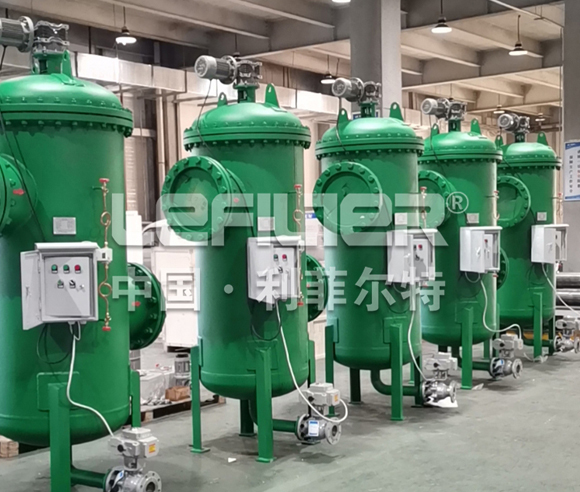Cost-Benefit Analysis of Retrofitting Filtration Systems in Aging Power Plants
DATE:2024-12-09 Number of views: 1 Source:dongwenhui
The global energy sector is undergoing a transformative period, with increasing focus on sustainability, efficiency, and compliance with stringent environmental regulations. Aging power plants, particularly those constructed decades ago, face mounting pressure to modernize their infrastructure. Retrofitting outdated filtration systems represents a crucial strategy for enhancing performance, reducing costs, and meeting regulatory demands.
We provides a detailed cost-benefit analysis of upgrading filtration systems in older power generation facilities, examining financial implications, operational improvements, and long-term sustainability.
Understanding the Challenges in Aging Power Plants
Older power plants often operate with outdated filtration technologies that struggle to meet modern efficiency and environmental standards. These shortcomings can lead to:
Reduced Operational Efficiency
Ineffective filtration systems cause frequent downtime, impacting power generation capacity.Increased Maintenance Costs
Outdated filters accumulate more contaminants, leading to frequent replacements and higher labor costs.Environmental Non-Compliance
Many older systems fail to meet current emissions and water quality standards, risking fines and shutdowns.
The solution lies in retrofitting these systems with advanced filtration technologies designed to address modern challenges.
Key Benefits of Retrofitting Filtration Systems
1. Enhanced Operational Efficiency
Modern filtration systems, such as high-efficiency cartridge filters and self-cleaning filters, deliver superior contaminant removal. This ensures:
Improved turbine and boiler performance.
Reduced fouling in cooling systems.
Minimized downtime due to cleaner system operation.
For instance, installing nanofiber membranes in cooling towers can enhance heat transfer efficiency, boosting overall plant output.

2. Cost Savings
While retrofitting involves initial investment, the long-term savings are significant:
Lower Maintenance Costs: Durable materials and automated systems reduce the frequency of repairs and replacements.
Energy Efficiency: Advanced filters consume less energy during operation, lowering utility bills.
Extended Equipment Lifespan: Clean systems reduce wear and tear, prolonging the life of expensive components like turbines and heat exchangers.
3. Regulatory Compliance
Modern filtration systems help plants meet strict environmental regulations by:
Reducing harmful emissions through advanced flue gas filters.
Ensuring wastewater discharge meets water quality standards.
Supporting sustainable water usage with efficient recycling systems.
4. Sustainability and Corporate Responsibility
Retrofitting demonstrates a commitment to sustainability. Cleaner operations reduce environmental impact and enhance the plant's reputation among stakeholders.
Cost Analysis of Retrofitting Filtration Systems
Initial Investment
The cost of retrofitting varies depending on the system's complexity and the chosen technology. Typical expenses include:
Purchase of new filtration systems (e.g., ultrafiltration units, HEPA filters).
Installation and integration into existing infrastructure.
Staff training for system operation and maintenance.
Operating Costs
Modern filtration systems often have lower operational costs due to:
Automation reducing manual labor requirements.
Energy-efficient designs minimizing power consumption.
Long-lasting filter media reducing replacement frequency.
Return on Investment (ROI)
Most power plants achieve ROI within 2-5 years, thanks to savings in maintenance, energy costs, and regulatory compliance. Additionally, enhanced plant efficiency leads to higher power generation, boosting revenue.
Case Studies: Successful Retrofitting Projects
Case 1: Coal-Fired Power Plant in North America
A 40-year-old coal plant replaced its outdated bag filters with high-efficiency cartridge filters. The upgrade:
Reduced particulate emissions by 80%.
Cut annual maintenance costs by $500,000.
Helped the plant meet stringent EPA air quality standards.

Case 2: Hydropower Plant in Europe
This plant faced sediment accumulation, reducing turbine efficiency. Retrofitting included:
Installation of advanced self-cleaning screen filters.
Automated sediment management systems.
Results: Increased energy production by 10% and reduced labor costs by 30%.

Case 3: Combined Cycle Gas Plant in Asia
An aging gas plant upgraded its cooling water filtration system with nanofiber membranes. The project:
Reduced fouling in heat exchangers.
Improved thermal efficiency by 15%.
Achieved ROI within three years due to energy savings.
Technologies for Retrofitting Filtration Systems
1. Self-Cleaning Filters
Ideal for continuous operation, these filters automatically remove debris without interrupting the process.
2. Nanofiber Membranes
High-precision filtration with minimal pressure drop, suitable for cooling systems and boilers.
3. Hybrid Systems
Combining multiple filtration technologies, hybrid systems address diverse contaminants in complex setups.
4. IoT-Enabled Filters
Smart filtration systems with sensors provide real-time performance data, enabling predictive maintenance.
Challenges in Retrofitting
While the benefits are clear, retrofitting comes with challenges:
Initial Costs: High upfront investment may deter some facilities.
Integration Issues: Adapting new systems to old infrastructure can be complex.
Downtime During Installation: Proper planning is essential to minimize operational disruption.
However, these challenges can be mitigated through careful project planning and selecting experienced providers.
Future Outlook for Retrofitting
As technology advances, retrofitting solutions will become even more efficient and cost-effective. Trends to watch include:
Development of ultra-durable filtration media.
Widespread adoption of IoT in filtration systems.
Incentives and subsidies for retrofitting to promote environmental compliance.
Retrofitting filtration systems in aging power plants is not merely a cost-saving measure; it is an investment in a sustainable future.
FAQ
What is retrofitting in power plants?
Retrofitting involves upgrading outdated systems, such as filtration units, to improve efficiency and meet modern standards.Why is retrofitting filtration systems important?
It enhances operational efficiency, reduces costs, and ensures compliance with environmental regulations.What types of filtration systems are suitable for retrofitting?
Self-cleaning filters, nanofiber membranes, and hybrid systems are commonly used.How does retrofitting improve environmental compliance?
Advanced filters reduce emissions, improve water quality, and support sustainable resource usage.What is the ROI for retrofitting filtration systems?
Most plants achieve ROI within 2-5 years through savings in maintenance, energy costs, and increased efficiency.What challenges are involved in retrofitting?
High initial costs, integration complexity, and downtime during installation are common challenges.Can retrofitting increase power generation?
Yes, improved efficiency often leads to higher output, especially in plants with significant fouling or sediment issues.Are there incentives for retrofitting?
Many governments offer grants or tax benefits for upgrading systems to reduce environmental impact.


